11 Spring Lawn Care Tips for Jacksonville, FL
BY LAUREN BRYANT | AUGUST 6TH, 2019 | FLORIDA, JACKSONVILLE, LAWN CAREBoth humans and plants appreciate the beautiful spring weather in Jacksonville. The sunshine draws turfgrass out of its winter dormancy, and it’ll start growing in full force before you know it. Warm-season grasses awaken from their winter slumber in March, picking up speed in April and May as temperatures rise.
Now’s the best time to assess your turf’s health. Did it suffer damage in the winter? Do you need to make any changes to its care? Get your lawn care off on the right foot with these 11 lawn care tips for Jacksonville so you can enjoy healthy, beautiful turf all summer.
In this article, we’ll cover:
- 11 Spring Lawn Care Tips for Jacksonville
- FAQ for Spring Lawn Care in Jacksonville
- How a Pro Can Help
11 Spring Lawn Care Tips for Jacksonville
1. Clean Up Your Yard
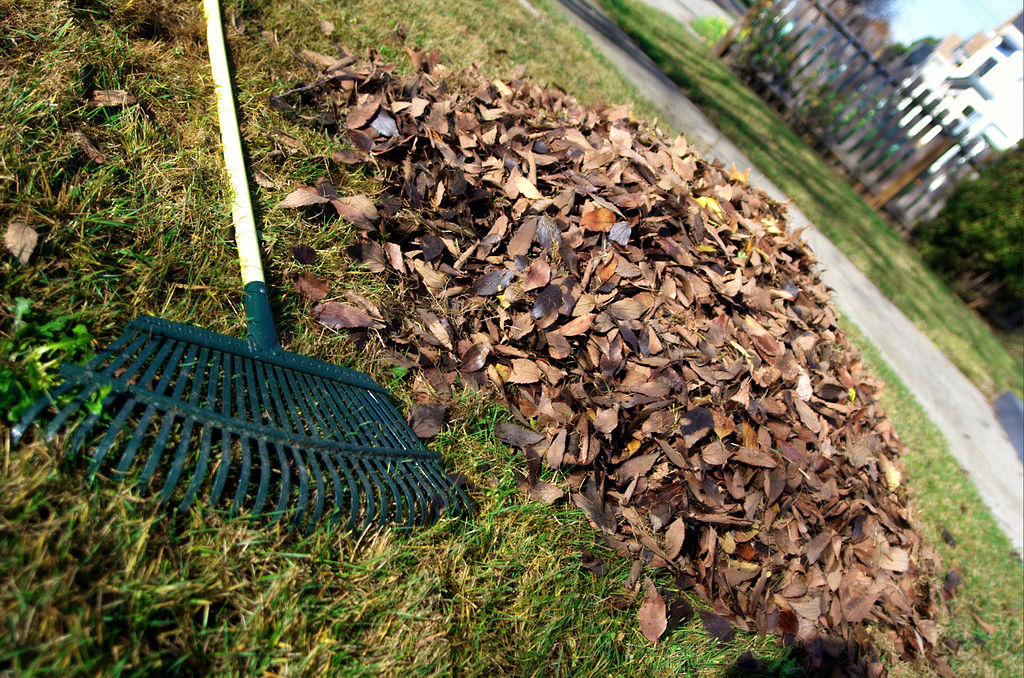
Photo Credit: David Goehring / Wikimedia Commons / CC BY 2.0
When you take a break from mowing in winter, it’s easy to let debris accumulate on the lawn. Thoroughly clean up the following, so you have a clean slate to work with:
- Leaves
- Sticks
- Animal waste
When your lawn is clean, you can get a better look at your grass and be better able to assess its health.
Pro tip: Shredded leaves can make great mulch for your lawn. Here’s how to use them:
- Spread the leaves in an even layer over the lawn
- Pass over them with your lawn mower
You also can purchase a mulching mower to make this process more effective.
2. Complete a Soil Checkup
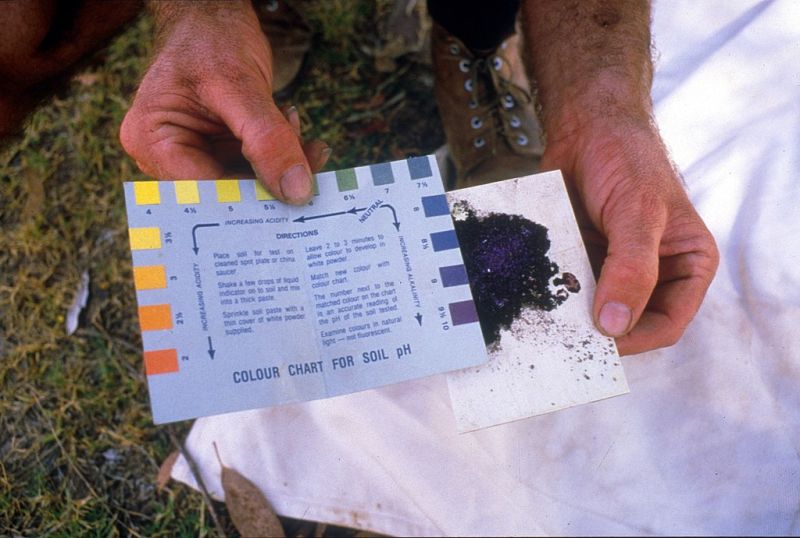
Photo Credit: CSIRO / Wikimedia Commons / CC BY 3.0
Before you begin any spring lawn treatments, you should get a soil test. Soil tests reveal your soil’s pH levels. Most grasses prefer a pH between 5 and 6, though St. Augustinegrass can tolerate up to 7.5. If the soil pH is too high or low, it interferes with nutrient uptake. Florida’s soils tend to be acidic, but coastal properties may have more alkaline soils.
Soil tests also may show what nutrients are in your soil, so you don’t over or under-fertilize. However, not all tests cover nutrient analysis. Contact the University of Florida’s Duval County Extension Office or other soil testing lab to see their current offerings.
3. Dethatch
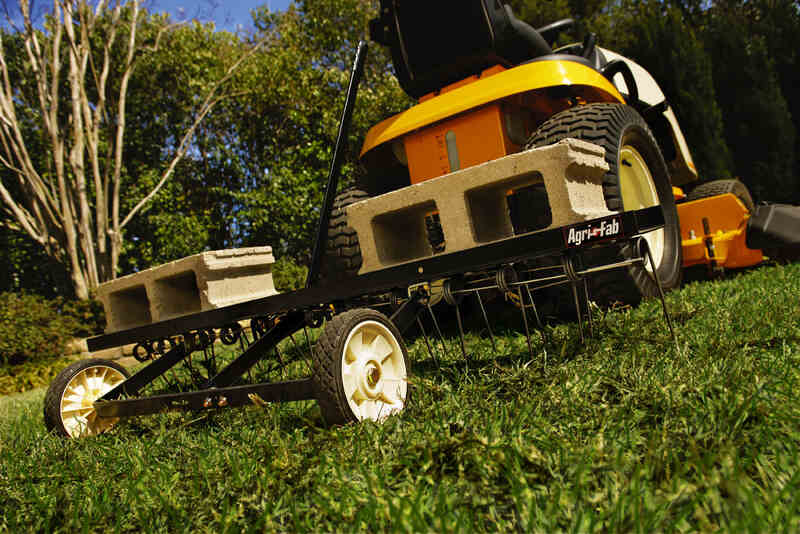
Photo Credit: Agri-Fab, Inc. / Wikimedia Commons / CC0
Does your lawn feel a little spongy? It may have accumulated too much thatch. Thatch is a layer of living and dead plant matter on the soil’s surface. A little thatch is fine, but too much thatch (typically more than an inch) can suffocate your lawn and host pests and diseases. Use a thatch rake, dethatcher, or verticutter to remove this layer.
Late spring is the best time to dethatch since your lawn has had some time to recover from winter and regain strength. However, you don’t necessarily need to dethatch every year. Most grass types can get by just fine with thatch removal every few years. The exceptions are Bermudagrass and centipedegrass, since they’re both prone to excessive thatch.
Here’s how often you should expect to dethatch the common grass types in Jacksonville:
| Grass Type | When to Dethatch |
| Bahiagrass | Rarely an issue |
| Bermudagrass | Once a year; best in summer to reduce recovery time |
| Centipedegrass | Dethatch when the thatch layer is more than ¼ inch |
| St. Augustinegrass | Dethatch when the layer exceeds 1 inch; best done in early spring or midsummer |
| Zoysiagrass | Every few years |
4. Aerate
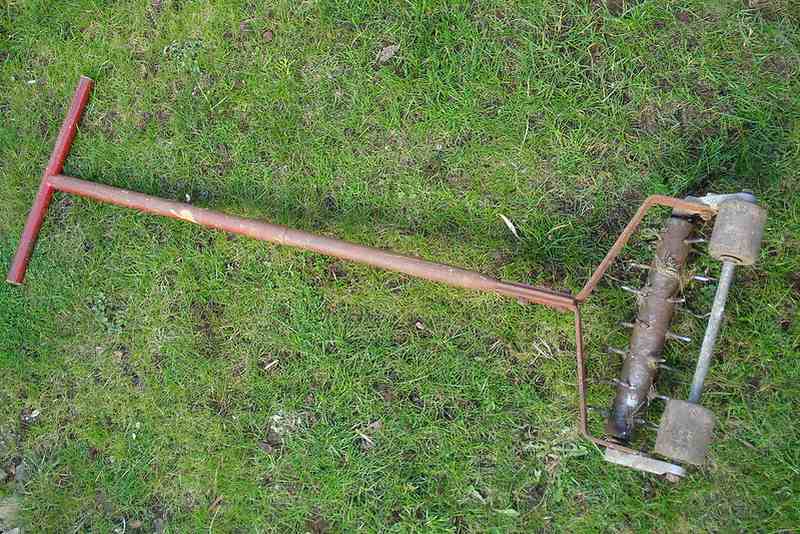
Photo Credit: allispossible.org.uk / Flickr / CC BY 2.0
With the pleasant weather, you’re probably enjoying more fresh air than before. Believe it or not, your lawn wants to breathe some of that air, too. Compact soil makes it more difficult for air, water, and nutrients to reach your turf’s roots. Heavy clay soils are more prone to compaction, but even the sandy soil in North Florida can fall victim to compaction with enough foot traffic or heavy equipment use.
To relieve soil compaction, aerate your lawn. Core aeration removes small plugs of soil, allowing your grass to spread out. Spike aeration also creates small holes for water, air, and nutrients but can ultimately cause the soil around the holes to become more compact. You can take advantage of the holes created by aeration to deliver seeds and fertilizer directly into the ground.
Late spring is the best time for this invasive procedure because grass can bounce back quickly during its growing season. It’s also good to wait until May or June when many warm-season weeds are no longer seeding. However, you don’t need to aerate every year. To see if you need aeration, push a screwdriver into the soil. If it’s difficult to do, your soil is compact and needs to be relieved.
5. Tackle Weed Control
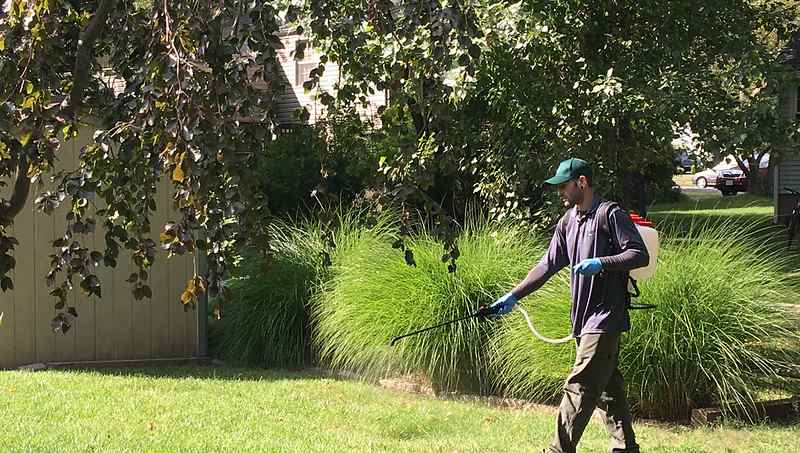
Photo Credit: Praxis Eco Pest Control / Flickr / CC BY 2.0
Your turfgrass may be one of many plants growing on your lawn this spring. Jacksonville is home to many troublesome weeds that compete for resources and affect curb appeal.
If you can already see the weeds, then you need post-emergent herbicides. To get ahead of weeds that haven’t yet sprouted, apply pre-emergent herbicides. Always follow the labels to avoid killing your grass and polluting the local ecosystem. Pre-emergent herbicides are especially risky for newly seeded lawns. To minimize herbicide use, avoid excessive moisture and keep your grass dense and healthy to outcompete weeds naturally.
Weeds are categorized by type (broadleaf, grassy, sedges, or rushes) and lifecycle (annual, biennial, or perennial).
Broadleaf Weeds
Broadleaf weeds have net-like veins on their broad leaves. They easily stand out from turfgrass, ruining the curb appeal of your lawn.
Here are some broadleaf weeds in Jacksonville:
- Beggarweed
- Chamberbitter
- Chickweed
- Clovers
- Dandelion
- Dollarweed
- Florida pusley
- Henbit
- Lawn burweed
- Lespedeza
- Matchweed
- Old world diamond-flower
- Plantain
- Prostrate spurge
You can treat broadleaf weeds with pre-emergent or post-emergent herbicides. Mowing also helps control them, especially for lawns that aren’t well-established yet.
Grassy Weeds
These weeds have hollow, rounded stems. They can look quite similar to your existing grass, but they’re still a threat.
Here are some common grassy weeds in Jacksonville:
- Alexandergrass
- Annual bluegrass
- Cogongrass
- Crabgrass
- Doveweed
- Goosegrass
- Torpedograss
Grassy weeds are best controlled with pre-emergent herbicides. Goosegrass germinates later than other weeds, so you can wait to apply pre-emergent control for three or four weeks into March. Post-emergent herbicides for grassy weeds are few and far between because they often kill turfgrass, too.
Sedges or Rushes
Rushes have solid round stems, and sedges have solid triangular stems. These weeds prefer moist soils, so avoid overwatering your lawn. Some sedges also like compacted soil because of the poor drainage.
Some sedges and rushes in Jacksonville include:
- Annual sedge
- Globe sedge
- Green kyllinga
- Purple nutsedge
- Yellow nutsedge
Cultural control is a good first step for sedges and rushes. Aerate to improve drainage and avoid overwatering. You may need repeated herbicide applications to rid yourself of nutsedges.
Annuals
Annual weeds live and die in less than a year. There are two types: summer annuals and winter annuals. Winter annual weeds like annual bluegrass will be at the end of their lifecycle, but summer annuals are just getting started.
Summer annual weeds in Jacksonville include:
- Chamberbitter
- Crabgrass
- Doveweed
- Goosegrass
- Old world diamond-flower
- Prostrate spurge
The winter annuals begin life in fall and die off by the end of spring, so you can decide whether to treat them now with post-emergent control or wait until they die on their own. You can get ahead of summer annual weeds with pre-emergent herbicide on the first of March or before temperatures reach 65 to 70 degrees Fahrenheit for four to five days in a row.
Cultural control is also effective for many annual weeds. Maintain a proper mowing, watering, and aeration schedule to discourage annual weeds.
Biennials
Biennial weeds have a longer growing season of two years. During the first year, they will only show vegetative growth. By the second year, they will flower, then die after producing and spreading their seeds.
Here are some Florida biennials:
- Bull thistle
- Carolina false dandelion
- Cudweed
- Wild carrot
Biennials are difficult to control in spring if they are seeding. If you remove or treat them with herbicides during their first year, you can halt their spread.
Perennials
Unlike annuals and biennials, perennials can stick around for three or more years if not treated.
Here are some perennials you could find in your Jacksonville lawn:
- Dandelion
- Dollarweed
- Purple nutsedge
- Torpedograss
- Yellow nutsedge
Because perennials reseed and regrow each year, post-emergent herbicides are most effective. It is easier to control perennials in the fall when they aren’t growing as aggressively.
6. Check for Pests
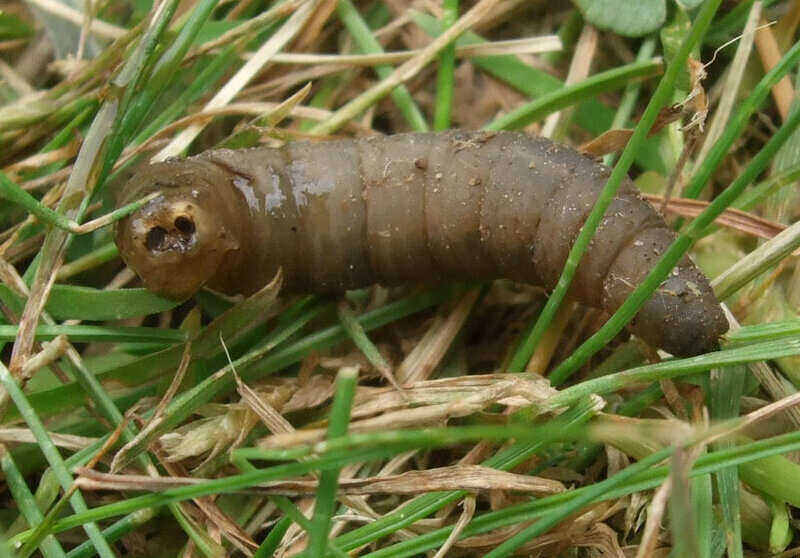
Photo Credit: Simon / Flickr / CC BY 2.0
Even healthy grass can fall victim to hungry pests. Here are some to keep an eye out for in spring:
White grubs: These scarab beetle larvae eat the roots of all grass types and are found underground. You can check to see if you have them by pulling back a one-square-foot flap of turf. If it lifts easily, it’s probably because the grubs have eaten the roots. Dead turf caused by these pests usually isn’t visible until late summer or early fall.
Fall armyworms: Appearing in spring and fall, these caterpillars create brown damaged spots in lawns. They particularly like bermudagrass. You can control fall armyworms with pesticides, but they may inadvertently kill their natural predators.
Chinch bugs: St. Augustinegrass is particularly vulnerable to chinch bugs. They create yellow and brown damage patches that often appear in drought-stressed parts of your lawn. Spring pesticide applications, dethatching, and reducing fertilizer use can help prevent these pests.
Hunting billbugs: Check your zoysia and bermudagrass for yellow coloring and easy-to-pull-up grass. This damage from hunting billbugs may be misdiagnosed as drought or disease. Keep your grass well-watered to withstand infestation, and use pesticides when there are more than ten billbugs per square foot.
7. Treat Diseases
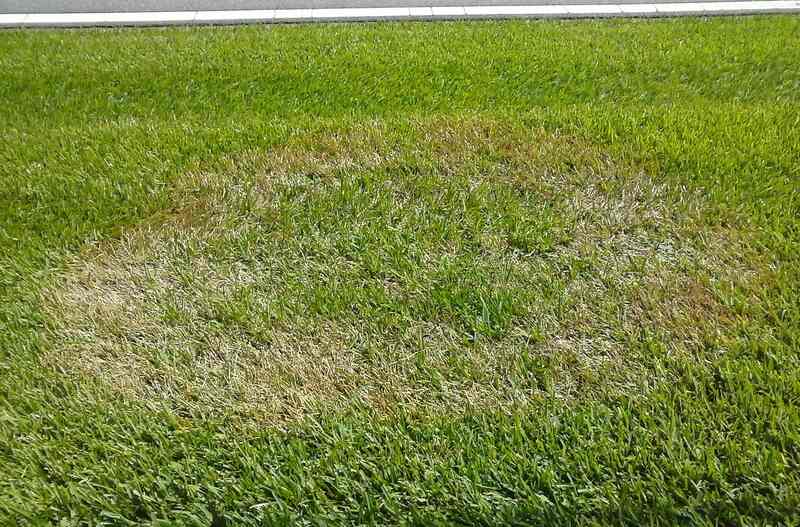
Photo Credit: Scot Nelson / Wikimedia Commons / CC0
Winter sometimes leaves an unpleasant surprise in your lawn: disease. Lawn diseases are usually caused by fungi and cause discoloration and death. If untreated, you could spread the disease with your lawn mower. You’ll need to identify the disease before you can begin treatment. Let’s review some common lawn diseases homeowners encounter in spring.
Large Patch
What to look for:
This disease creates discolored turfgrass patches around 1 foot to several feet in diameter. Dark rot infects the lowest part of the leaf, though not the roots. It is especially problematic for St. Augustine and zoysiagrass lawns but can affect all grass types grown in Jacksonville. Look for large patch throughout spring when temperatures are below 80 degrees Fahrenheit.
How to treat large patch:
Fungicides like azoxystrobin, chlorothalonil, fludioxonil, flutolanil, and iprodione will stop the spread. However, it’s better to prevent it in the first place with proper lawn maintenance practices. Water in the morning to avoid leaving the grass excessively wet. Use slow-release nitrogen fertilizer instead of quick-release, so you don’t fuel the fungus.
Gray Leaf Spot
What to look for:
Gray leaf spot slows down growth and makes lawns look thinner. Look for small, oval-shaped olive green or brown spots with dark borders. These spots will produce spores when humidity is high. This fungal disease most often affects St. Augustinegrass but also afflicts centipedegrass.
How to treat gray leaf spot:
Gray leaf spot doesn’t always cause serious problems. However, you can apply fungicides and plant-available silicon before sprigging to suppress gray leaf spot. Avoid compacted soil, overwatering, and quick-release nitrogen. The herbicide atrazine can put St. Augustinegrass at risk if it’s applied when temperatures are above 85 degrees Fahrenheit.
Cercospora Leaf Spot
What to look for:
This disease affects St. Augustinegrass lawns in late spring and early summer when rainfall is frequent. The grass is more likely to fall victim if soil fertility is low and light is scarce. Look for dark brown leaf spots and oblong lesions similar to those caused by gray leaf spot.
How to treat Cercospora leaf spot:
Use slow-release nitrogen and potassium fertilizer to prevent Cercospora leaf spot. If the grass is already infected, apply fertilizer with quick-release nitrogen and potassium with a ratio of one to one. Water early in the morning (before 8 a.m.) to avoid long wet periods, and only when the grass shows signs of dehydration. Consider the Bitterblue cultivar for a more resistant St. Augustinegrass lawn.
Dollar Spot
What to look for:
The silver dollar size of the round, straw-colored patches give this disease its name, though the patches can grow much larger. Look for small, pale lesions on the grass blades. Turfgrass may become thin and more susceptible to weeds. Dollar spot is common in spring and fall and does best when temperatures are between 60 and 90 degrees Fahrenheit.
How to treat dollar spot:
Keep grass hydrated, as low soil moisture makes dollar spot worse. Provide sufficient nitrogen through fertilizer to improve resistance — too little makes the grass vulnerable, but too much can promote dollar spot and other diseases. Keep on top of other cultural practices like dethatching and aeration to keep grass healthy enough to fight this disease. Use fungicides if cultural control doesn’t help.
Slime Molds
What to look for:
Though typically harmless, slime molds coat grass blades with unappealing spores and growths. Some may look like soot while others look like blobs. Slime molds appear in spring when the weather is warm and wet.
How to treat slime mold:
Smile mold doesn’t technically require control. You can let it disappear naturally and your grass will be fine since the mold only sits on the surface. However, you can remove it with mowing or a strong stream of water.
8. Spread New Grass Seed
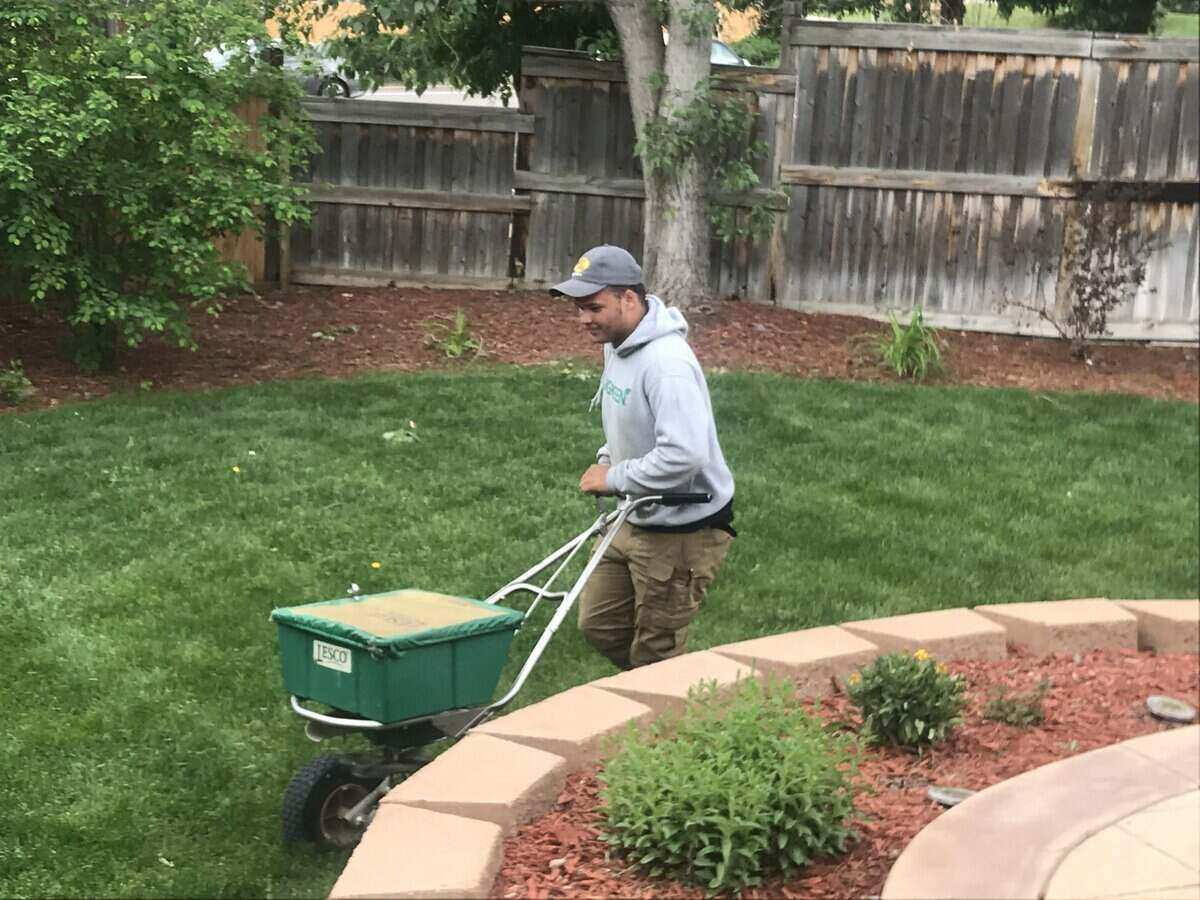
Photo Credit: Brenda Ryan / Wikilawn
If your lawn is thinner than you’d like, it may benefit from overseeding. You can evenly spread the seeds over the whole lawn or target specific areas that are particularly thin. If your lawn has bare patches, consider sprigs, plugs, or sod to fill the area instead.
Before planting more grass, make sure you’ve addressed any underlying issues. If overirrigation, poor soil quality, disease, pest infestation, or other improper care is the root cause of your thin grass, new grass won’t solve the problem. Proper lawn maintenance may make grass grow denser naturally, especially as the peak growing season approaches.
If you decide to renovate or repair your lawn, here are the best times to establish each grass type.
| Grass Type | Best Daily Low – High Temperatures for Planting (in Fahrenheit) | Best Time to Plant Seeds in Jacksonville |
| Bahiagrass | 77 – 86 | March – June |
| Bermudagrass | 75 – 80 | March – June |
| Centipedegrass | 70 – 90 | April – July |
| St. Augustinegrass* | 65 – 80 | March – May |
| Zoysiagrass | 80 – 95 | April – July |
*St. Augustine can’t be established with seeds, so the above information applies to sod, plugs, and sprigs.
9. Fertilize If Needed
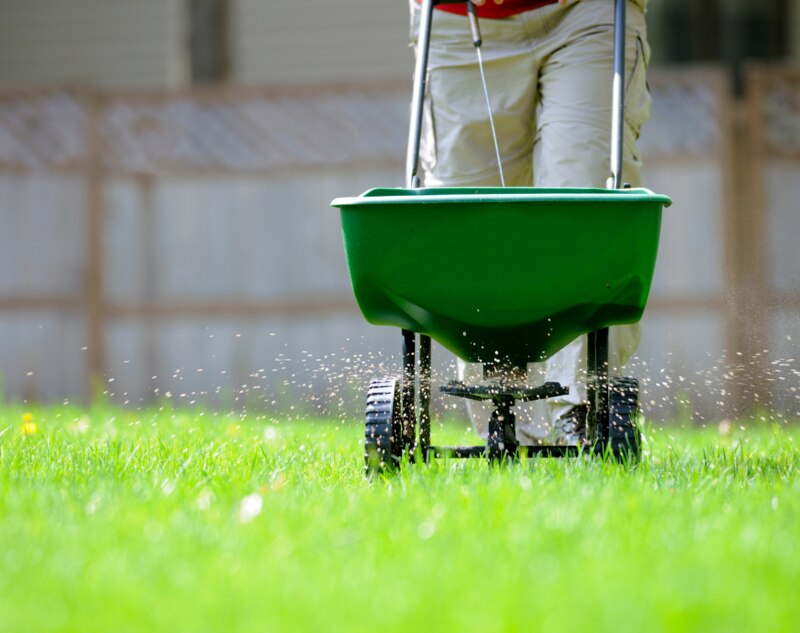
Photo Credit: groveb / Canva Pro / License
Grass can best utilize nutrients when they’re actively growing. Use the results of your soil test to guide your purchases in the fertilizer aisle. The best fertilizers for Jacksonville lawns have slow-release nitrogen and little to no phosphorus.
Florida soils tend to be high in phosphorus but keep an eye out for phosphorus deficiency just in case. Symptoms include reduced growth and dark green shoots that turn purple.
The middle of April is the best time to fertilize your lawn. If you fertilize too soon or too much, it can lead to fertilizer runoff and harmful algal blooms in local waterways like the St. John’s River. You also should avoid fertilizing when there’s a hurricane, tropical storm, or flooding warning, so those nutrients don’t go down the drain.
10. Prepare Your Equipment for the First Mow of the Season
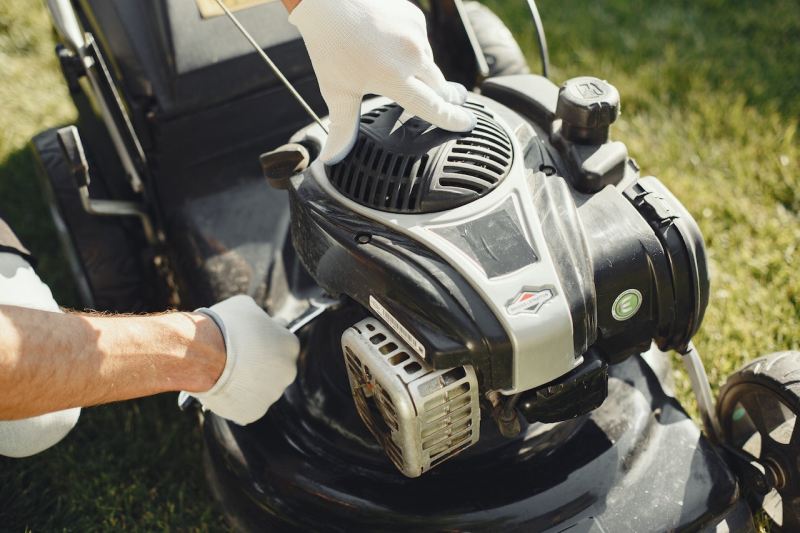
Photo Credit: Pexels
Your winter break from mowing was nice, but now you’ll need to dust off the mower and get to work. First, take care of any mower maintenance:
- Sharpen the blades
- Check the spark plugs
- Clean or replace the air filters
- Refill oil
- Lubricate parts
- Adjust the mowing height
- Check the battery
While you’re at it, check the condition of your weed eater.
- Refill the fuel
- Change the oil
- Check the spark plugs
- Charge electric models
- Deep clean the trimmer parts with a damp cloth and stiff brush
- Inspect your trim line for damage and replace if needed
- Check or replace the air filter
Once your tools are ready, measure your grass. You don’t want to cut your grass too short, or it could affect its health. Never cut off more than one-third of the grass blade at once. Doing so will damage the grass and hinder its growth. Here are the ideal mowing heights for common Jacksonville grass types:
| Grass Type | Mowing Height |
| Bahiagrass | 3-4 inches |
| Bermudagrass | 1-2 inches |
| Centipedegrass | 1.5-2 inches |
| St. Augustine | 2.5-4 inches |
| Zoysiagrass | 1-2.5 inches |
Your grass won’t reach its peak growth rate until summer, so you only need to mow once or twice a week during spring. Use its current height as your guide, and mow more frequently when you notice its growth rate increasing.
11. Water Your Lawn
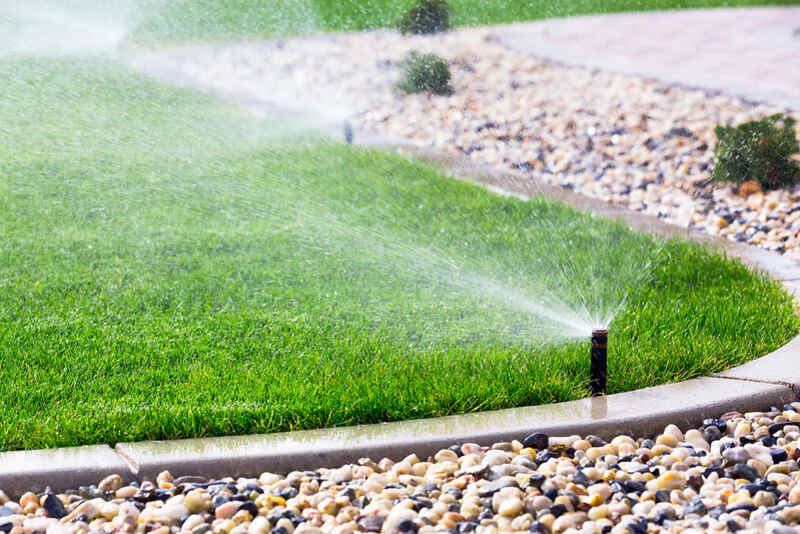
Photo Credit: Aqua Mechanical / Flickr / CC BY 2.0
Overwatering your lawn can have worse consequences than underwatering, as it encourages diseases and weeds. The University of Florida recommends homeowners irrigate on an as-needed basis to avoid overwatering and wastage. Only irrigate only when you see signs of dehydration, such as:
- Wilting
- Blue-gray color
- Visible footprints
You will likely need to water your lawn once or twice a week in spring, depending on rainfall. The spring showers in Jacksonville will likely save you time and lower your water bill.
Most Jacksonville lawns require ½ to ¾ inch of water at a time. Here are specific recommendations based on grass type:
| Grass Type | Amount of Water per Application (in Inches) |
| Bahiagrass | ½ – ¾ |
| Bermudagrass | ¾ – 1 |
| Centipedegrass | ½ – ¾ |
| St. Augustinegrass | ½ – ¾ |
| Zoysiagrass | ½ – ¾ |
FAQ About Spring Lawn Care in Jacksonville
The best grass types for Jacksonville are:
• Bahiagrass
• Bermudagrass
• Centipedegrass
• St. Augustinegrass
• Zoysiagrass
All these grasses are warm-season grasses, which means they grow best when temperatures are warm. The bulk of your lawn care will be in summer, but you still need to care for your lawn in spring and fall to prepare it for the changing seasons.
If your current grass type isn’t working, you can try overseeding it with another to see how it fares. If your current grass type is doing well, it’s probably best to stick with what you’ve got.
Some people overseed their lawns in fall with cool-season species like perennial ryegrass to extend its green color during winter.
For the first mow of the season, consider cutting your grass a bit shorter to eliminate old grass and debris. However, you shouldn’t cut off too much, or you could damage the grass. Make sure always to keep the grass height within the recommended guidelines. Feel free to raise your mowing height gradually as the season progresses.
Weed and feed products are not as effective as using each product individually. Pre-emergent herbicides are best applied around March 1 in North Florida, while fertilizer should wait until around April 15.
How a Pro Can Help
Do you want to spend your spring on yard work? This season is the perfect time to visit the beach before the summer tourists arrive. Leave lawn care to a Jacksonville professional, and they’ll ensure your lawn is prepped for its peak growing season.
Main Photo Credit: Ebyabe / Wikimedia Commons / CC BY-SA 3.0